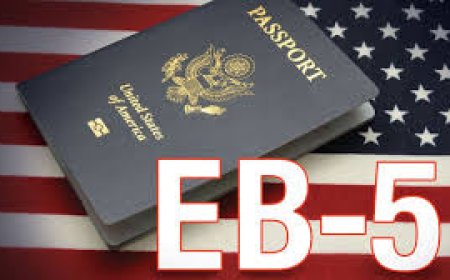What Is the Simplest Path to Achieve US Permanent Residency?

Many people dream of living in the United States for better opportunities, safety, and a brighter future. One important step toward making that dream a reality is gaining US permanent residency. This status allows individuals to live and work in the US permanently, and it opens the door to future citizenship. While the process may seem complex at first glance, understanding the various options and steps involved can make it feel more manageable. This post offers a fresh, clear, and human-centered explanation of how to achieve US permanent residency.
Understanding US Permanent Residency
US permanent residency gives a person the legal right to live and work in the United States on a long-term basis. It is commonly referred to as having a green card, and while it does not make you a US citizen, it does bring many of the same benefits. Permanent residents can work in almost any job, travel more freely in and out of the country, and apply for US citizenship after meeting certain requirements.
Green card holders also enjoy protection under US laws and can sponsor some family members for permanent residency as well. Most importantly, it provides stability, security, and a real opportunity to build a life in the United States.
Top Paths to US Permanent Residency
There are several ways to qualify for US permanent residency, depending on your situation. Each path has different rules, processing times, and paperwork, but all lead to the same goalbecoming a lawful permanent resident.
1. Family-Based Sponsorship
This is the most common path to permanent residency. If you have a close family member who is a US citizen or a green card holder, they may be able to sponsor you. Eligible relationships include:
-
Spouse of a US citizen or permanent resident
-
Child of a US citizen
-
Parent of a US citizen (if the child is over 21)
-
Sibling of a US citizen
-
Fianc(e) of a US citizen (under a different visa that leads to a green card)
Immediate relatives of US citizens have the shortest waiting time since there is no yearly limit for their category. Other relatives may face longer wait periods depending on their visa category and country of origin.
2. Employment-Based Green Cards
If you have job skills that are in demand or a job offer from a US employer, you may qualify for an employment-based green card. There are five categories under this option:
-
EB-1: For individuals with extraordinary abilities in arts, sciences, education, business, or athletics
-
EB-2: For professionals with advanced degrees or exceptional skills
-
EB-3: For skilled workers, professionals, and unskilled workers with employer sponsorship
-
EB-4: For special immigrant categories, such as religious workers or international employees
-
EB-5: For investors who invest a significant amount in a US business and create jobs
Each category has its own set of requirements, and in most cases, an employer must sponsor your application.
3. Diversity Visa Lottery
Also known as the green card lottery, this program is for people from countries with low immigration rates to the US. Each year, around 50,000 green cards are randomly awarded to eligible applicants through this lottery.
To qualify, you must be from an eligible country and meet basic education or work experience criteria. Though winning is based on luck, it remains a viable path for many hopeful immigrants.
4. Refugee or Asylum Status
People fleeing persecution due to race, religion, nationality, political opinion, or belonging to a particular social group may apply for refugee or asylum status. After one year of living in the US under this protection, individuals may apply for a green card.
This path is designed to offer safety and long-term residence to those facing serious threats in their home countries.
5. Other Special Programs
There are also several other lesser-known but legitimate ways to gain permanent residency:
-
Victims of domestic violence under the Violence Against Women Act (VAWA)
-
Victims of trafficking (T visa) or other crimes (U visa)
-
Individuals who have served in the US military
-
Long-term residents under specific immigration laws
These options are specific and often require unique circumstances, but they serve as lifelines for many people.
The Application Process for a Green Card
The green card process can be long, but it follows a relatively consistent structure across most paths:
Step 1: Determine Eligibility
Start by identifying which path applies to youfamily, employment, lottery, asylum, or another category. Each one has specific forms, fees, and timelines.
Step 2: Petition Filing
Most paths require someone (a family member or employer) to file a petition on your behalf. This could be:
-
Form I-130 for family-based cases
-
Form I-140 for employment-based cases
This petition is submitted to US Citizenship and Immigration Services (USCIS) for review.
Step 3: Visa Availability
Some categories have a yearly cap on the number of green cards available. If theres a waiting list, your application will be placed in line based on your priority date.
Step 4: Apply for Adjustment of Status or Consular Processing
Once your petition is approved and a visa is available, you can apply for a green card through:
-
Form I-485 (if youre already in the US)
-
Consular processing (if youre outside the US, at a US embassy or consulate)
Step 5: Attend Biometrics and Interview
You will be asked to provide fingerprints, photos, and attend an in-person interview. The purpose of the interview is to confirm your identity and ensure you meet all eligibility requirements.
Step 6: Approval and Green Card Issuance
If everything checks out, youll receive your green card by mail. This card proves your status as a US permanent resident.
Benefits of Having a Green Card
Having US permanent residency comes with many advantages:
-
You can live and work permanently in the US
-
You can travel more freely, though long absences may affect your status
-
You can sponsor certain family members for their own green cards
-
You may qualify for social benefits after a certain period
-
You can apply for US citizenship after three to five years
Your Responsibilities as a Green Card Holder
Along with benefits come responsibilities:
-
Obey US laws and regulations
-
File and pay taxes
-
Keep your green card up to date
-
Report any changes of address to USCIS
-
Avoid long trips abroad without a reentry permit
What Could Put Your Green Card at Risk?
Your green card can be revoked if you:
-
Commit certain crimes
-
Misrepresent facts in your application
-
Fail to file taxes or declare residency
-
Stay outside the US for too long without proper authorization
To maintain your status, its important to follow all rules and remain connected to your life in the US.
Conclusion: Taking the First Step Toward US Permanent Residency
Achieving US permanent residency is a major milestone that brings stability, security, and countless opportunities. While the process may seem overwhelming at first, breaking it down into clear steps makes it far more approachable.
Whether your path is through family, a job, a lottery win, or a need for protection, the journey to becoming a permanent resident is worth the effort. Take your time, stay informed, and dont hesitate to seek guidance when needed.
Your new life in the United States might be closer than you think. Start now, and take that first step toward a better, more secure future.


























